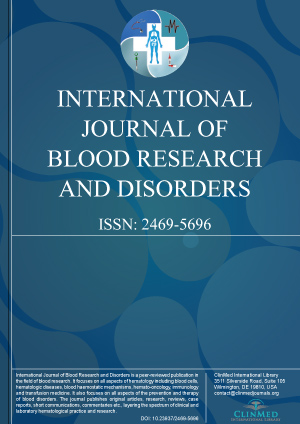Archive
Open Access DOI:10.23937/2469-5696/1410019
DA Ammon, H Andruszkow, L Sieg, M Wilhelmi, CF Weber, N Rahe-Meyer and AA Hanke
Article Type: Research Article | First Published: November 27, 2015
Article Formats
- Full Article
Open Access DOI:10.23937/2469-5696/1410018
The Management of Mucositis of Pediatric Hematopoietic Stem-Cell Transplantation
CIFTCIOGLU Sule and EFE Emine
Article Type: Perspective | First Published: September 23, 2015
Article Formats
- Full Article
Open Access DOI:10.23937/2469-5696/1410017
Koksal Deveci, Serdal Korkmaz, Enver Sancakdar, Duygu Acibucu, Filiz Alkan, Hatice Terzi and Mehmet Sencan
Article Type: Research Article | First Published: September 17, 2015
Article Formats
- Full Article
Open Access DOI:10.23937/2469-5696/1410016
The Levels of PAI-1, Urokinase uPA, Thrombomodulin and TFPI in Essential Thrombocythemia
Oktay Bilgir, Ferda Bilgir, Mehmet Calan and Giray Bozkaya
Article Type: Research Article | First Published: September 05, 2015
Article Formats
- Full Article
Open Access DOI:10.23937/2469-5696/1410015
Tom Rider, John Jones, John Brewin, Gillian Horne, Jack Wills, Hannah Barton, Kevin Boyd, Timothy Corbett, Sabina Dizdarevic and Timothy Chevassut
Article Type: Research Article | First Published: July 09, 2015
Article Formats
- Full Article

Volume 2
Issue 2
Issue 2
